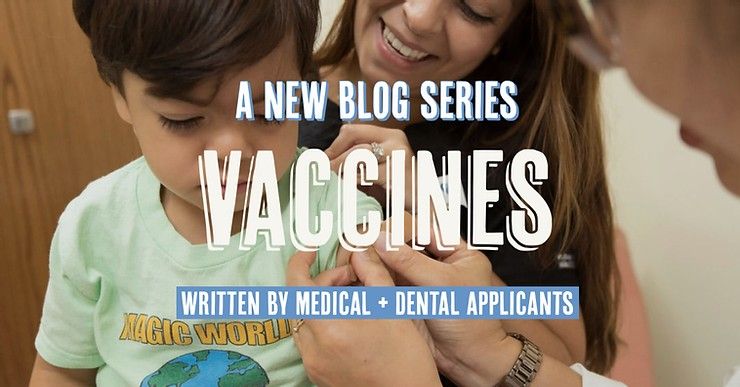Guest blog by Ritika Ghai in Year 12
Developing a vaccine is a long and complex process which can take to around 10- 15 years. Developing a vaccine is a long process as viral diseases cannot be cured by antibiotics as they reproduce within the host cells. The development of antiviral drugs is difficult as this can damage the host cell as well as killing the virus. Viruses are able to change their antigens quickly where new drugs are needed to be regularly generated. This is due to the DNA of pathogens which mutate frequently, where some others may not change (BBC Bitesize, 2020).
There are six stages to develop a vaccine which includes: exploratory stage, pre- clinical stage, clinical stage, regulatory review and approval, manufacturing and quality control. The exploratory stage is where laboratory research is taken place which can last up to 2- 4 years which include scientists identifying natural or synthetic antigens which may help to prevent or treat a disease. The antigens could include weakened viruses or bacterial, virus- like particles, weakened bacterial toxins or other substances that are derived from pathogens (The College of Physicians of Philadelphia, 2018).
The pre- clinical stage is where tissue- culture systems or cell- culture systems as well as animal testing is used to help determine the safety of the vaccine, immunity of the vaccine and the ability of the vaccine being able to provoke the immune system. Many of the candidate vaccine may not move to the next stage of the vaccine development as it may fail to produce the immunity needed or may be harmful to test subjects. This stage can help to determine a safe starting dosage as well as a safe method for the administration of the vaccine. The pre- clinical stage can last up to 1- 2 years which can involve researchers in private industry.
The clinical development stage is where the vaccine has to pass numerous safety tests and demonstrate that the vaccine works in animals. When this has been approved, there are three phases that it will need to go through.
Phase I is where a trial is taken place of up to 100 people to help determine the response of the vaccine to test the safety, as well as to learn more about the immune response from the vaccine given out to the test subjects. If this phase is shown to be promising, the next phase will continue to help test the vaccine further. This phase can take to up to 1- 2 years to complete.
Phase II is where a larger group of individuals of about several hundred people participate in the further testing of the vaccine. Phase II can include some of the individuals belonging to the groups at risk of obtaining the disease. This trials can be controlled or randomized ss well as including a placebo group (The College of Physicians of Philadelphia, 2018). This is used to help gain a better understanding of the safety, dosage size, potential side effects, the schedule of immunizations, method of delivery and the immunogenicity of the vaccine. This phase can take up to around 2 years to complete.
Phase III is taken place to help test larger scales of individuals where thousands to ten thousands are involved in the testing of the vaccine. Phase III tests are randomized as well as double blind and the vaccine is also tested against a placebo, a vaccine for another type of disease or another substance. The testing of the vaccine’s effectiveness and safety is tested where the level of immunity, evidence of the number of cases reduced is analysed. This will also help to identify any rarer side effects that has not been identified in earlier phases. This phase can take up to around 3- 4 years to complete.
The trial data is then reviewed and ensured that levels of safety and efficacy are met. It can take a few years for the data to be reviewed, product license request completed and preparing the launch of the product. Regulators check that the trials that have taken place are safe and that there are more advantages than disadvantages for the vaccine. The vaccine and the trials have to ensure that regulations that are set out by authorities are met. Trials in the UK must be approved by the Medicines and Healthcare products Regulatory Agency (MHRA) and approved by authorities such as NHS Research Ethics Committee, NHS Research and Development office as well as The Health and Safety Executive (HSE) (Oxford Vaccine Group, 2018).
The development of a vaccine can take many years in order to ensure that the safety, effectiveness and many other factors is approved of. Many potential vaccines do not pass different stages as constant evaluation is always done to help determine whether the product is worth pursuing. During different trials, many ideas are taken into consideration while others are abandoned. The development of vaccines is carefully analysed from trained professionals through different sectors throughout the process. After the vaccine has been approved of and licensed, the vaccine is continuously monitored where any reports of suspected side effects are reported where any further investigation can take place. In rare circumstances, the vaccine may even be withdrawn from use depending on the side effects that are reported.
References
BBC Bitesize, 2020. How can we prevent the spread of infection? - OCR 21C. [Online] Available at: https://www.bbc.co.uk/bitesize/guides/zybp4qt/revision/3[Accessed 9 April 2020].
Oxford Vaccine Group, 2018. How vaccines are tested, licensed and monitored. [Online] Available at: https://vk.ovg.ox.ac.uk/vk/vaccine-development[Accessed 9 April 2020].
The College of Physicians of Philadelphia, 2018. Vaccine Development, Testing, and Regulation. [Online] Available at: https://www.historyofvaccines.org/content/articles/vaccine-development-testing-and-regulation[Accessed 8 April 2020].
